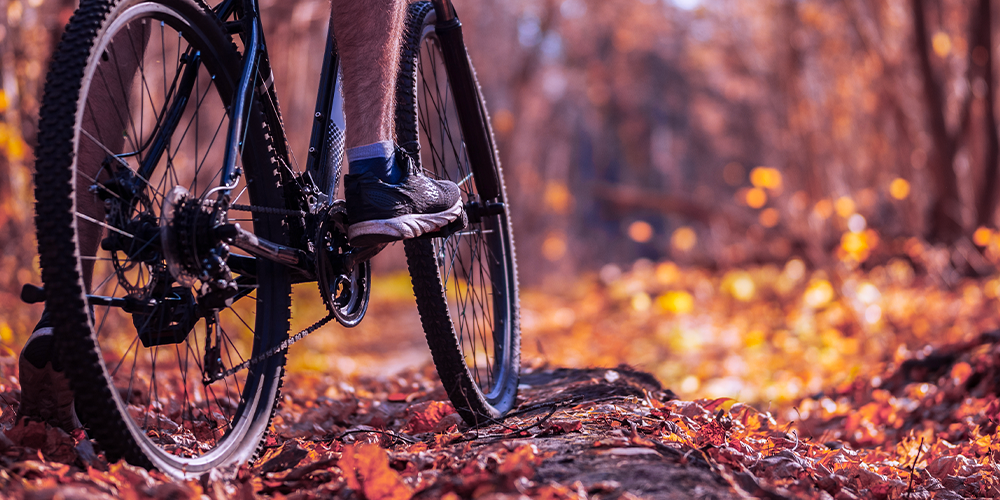September marks the transition from summer to autumn, a critical phase for triathletes, cyclists and runners preparing for fall competitions. This phase often coincides with the peak of fitness before the target competition. In this article, we provide five valuable tips on how endurance athletes can best cope with this seasonal transition in their training.
1. Adapt your training
The beginning of autumn is the ideal opportunity to adapt your training plan and take advantage of the cooler temperatures to improve performance and prevent injuries. Here are some tips on how to adapt your training:
- Take advantage of the cooler temperatures to focus on training in hilly terrain. Running in the mountains or cycling on challenging terrain can increase strength and endurance.
- Focus on specific training sessions, working on any weak points to improve your performance in all three disciplines.
- Gradually increase the intensity of training sessions, incorporating more intervals and tempo training, while still maintaining the endurance base acquired during the summer.
- Spend time on improving technique in all three disciplines.
2. Peaking & Tapering
The closer the race gets, the more specific and intense the training becomes. In a periodized training plan, this phase of intensification in the run-up to the target race is known as ‘peaking’ and can last 2 to 3 weeks. It is not uncommon for this form-optimizing phase to fall in September.
This is followed by ‘tapering’, an unloading phase that takes place shortly before the main event and allows you to be in optimal physical condition on race day. It is important to keep the training intensity high, but reduce the overall volume (by around 40-50%).
Even if you don’t have a race in October, it is essential to stick to the phases of the periodized training plan. This approach ensures an optimal balance between intensive training and recovery, helping to maximize your body’s adaptation. 2PEAK automatically adapts the training sessions to each phase, taking into account the level of recovery (regeneration battery), in order to achieve the desired race goal.
More information on Peaking & Tapering
3. Simulate race conditions
To prepare effectively for upcoming races, it is crucial to simulate during training the challenges and variables you will face in the race. Here are some practical tips:
- Analyse race conditions: Identify key race variables such as terrain type, weather conditions, elevation and pace strategies. Then adapt your training accordingly.
- Simulate difficult situations: Prepare for unexpected events by training for difficult scenarios. For example, hill repeats or fast transitions between swimming and cycling.
- Test equipment and clothing: Make sure the equipment and clothing you intend to use in the race are well tested and suitable to avoid unpleasant surprises.
- Develop race strategy: Work on your race strategy and modify it if necessary according to your performance in training. For triathletes: Test your endurance in all three disciplines.
- Practice mental concentration: Visualise being in the race to build your mental strength and better prepare for the stress factor.
4. Choose appropriate clothing
As the days get shorter and temperatures drop, it is essential to prepare for training in cooler temperatures. Shorts and a T-shirt may no longer be sufficient. Here are some clothing considerations:
- Layer your clothing: wear several light layers to effectively regulate your body temperature during exercise. Over summer clothing, you can wear a light waistcoat or a long-sleeved shirt that you can take off if you get too hot.
- Weather protection: For wet and windy days, a windproof and waterproof jacket is essential to stay dry and protected.
- Cold-weather accessories: Provide lightweight thermal gloves and a hat for colder days.
- Visibility and safety: Make sure your clothing is visible and safe, especially when the days get shorter and visibility decreases. Reflective elements or bright colours can help ensure your safety during training.
5. Autumn nutrition
The nutritional needs of runners, cyclists and triathletes can change between summer and autumn. Here are some tips on how to adapt your diet to maximise performance and enhance recovery:
- Eat according to the season: choose a variety of seasonal fruits and vegetables to provide your body with essential vitamins and minerals.
- Stay hydrated: Keep an eye on adequate fluid intake, even if you sweat less due to cooler temperatures.
- Optimal ratio of carbohydrates to protein: make sure you maintain a good balance of complex carbohydrates and lean protein in your diet.
- Nutritional strategy for races: plan a nutritional strategy in advance if you have an upcoming race. Experiment with different foods and drinks during training to find out what works best for you.
Create with 2PEAK an AI-based training plan for triathlon, cycling and running that adapts to your performance after each training session. Click here to download the app.


